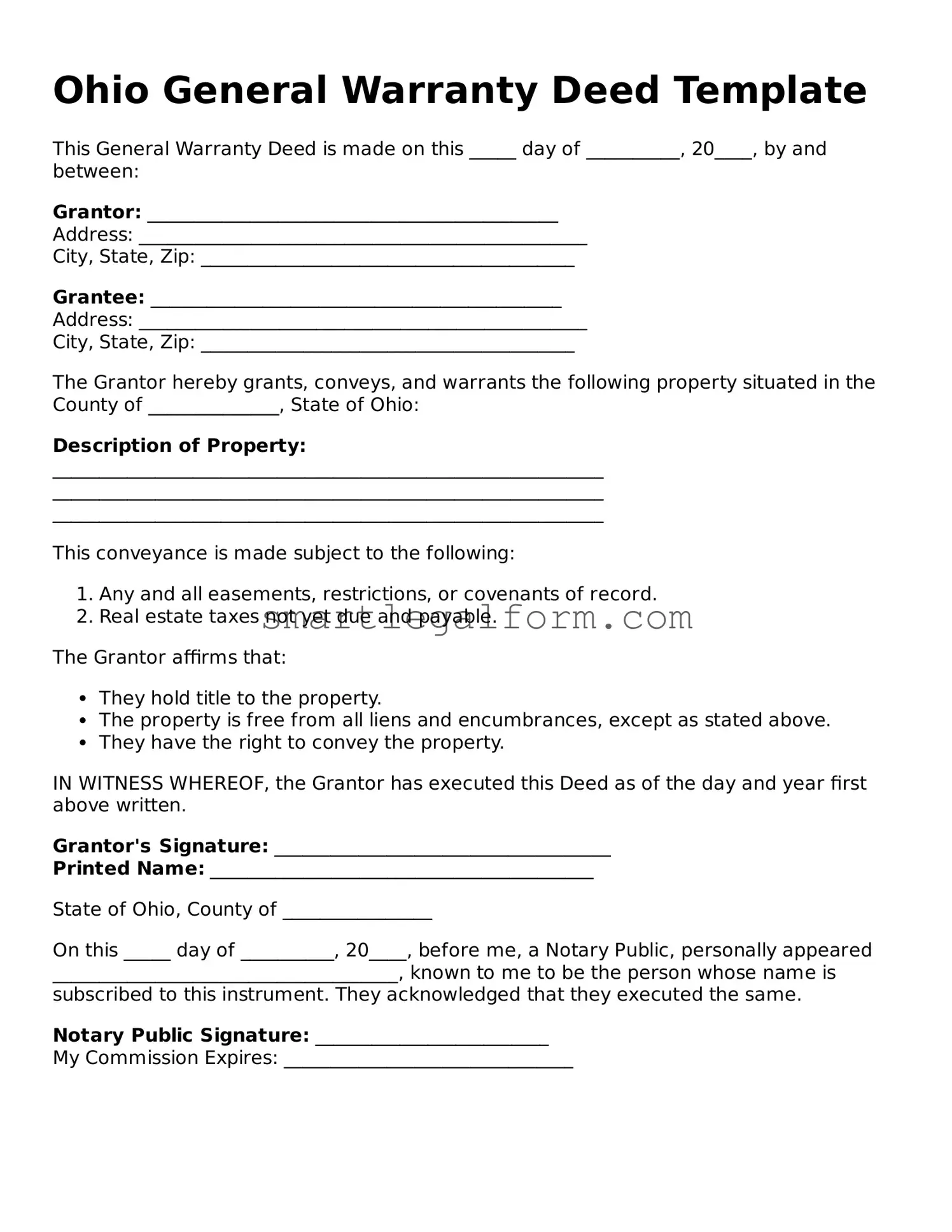Ohio General Warranty Deed Template
This General Warranty Deed is made on this _____ day of __________, 20____, by and between:
Grantor: ____________________________________________
Address: ________________________________________________
City, State, Zip: ________________________________________
Grantee: ____________________________________________
Address: ________________________________________________
City, State, Zip: ________________________________________
The Grantor hereby grants, conveys, and warrants the following property situated in the County of ______________, State of Ohio:
Description of Property:
___________________________________________________________
___________________________________________________________
___________________________________________________________
This conveyance is made subject to the following:
- Any and all easements, restrictions, or covenants of record.
- Real estate taxes not yet due and payable.
The Grantor affirms that:
- They hold title to the property.
- The property is free from all liens and encumbrances, except as stated above.
- They have the right to convey the property.
IN WITNESS WHEREOF, the Grantor has executed this Deed as of the day and year first above written.
Grantor's Signature: ____________________________________
Printed Name: _________________________________________
State of Ohio, County of ________________
On this _____ day of __________, 20____, before me, a Notary Public, personally appeared _____________________________________, known to me to be the person whose name is subscribed to this instrument. They acknowledged that they executed the same.
Notary Public Signature: _________________________
My Commission Expires: _______________________________
